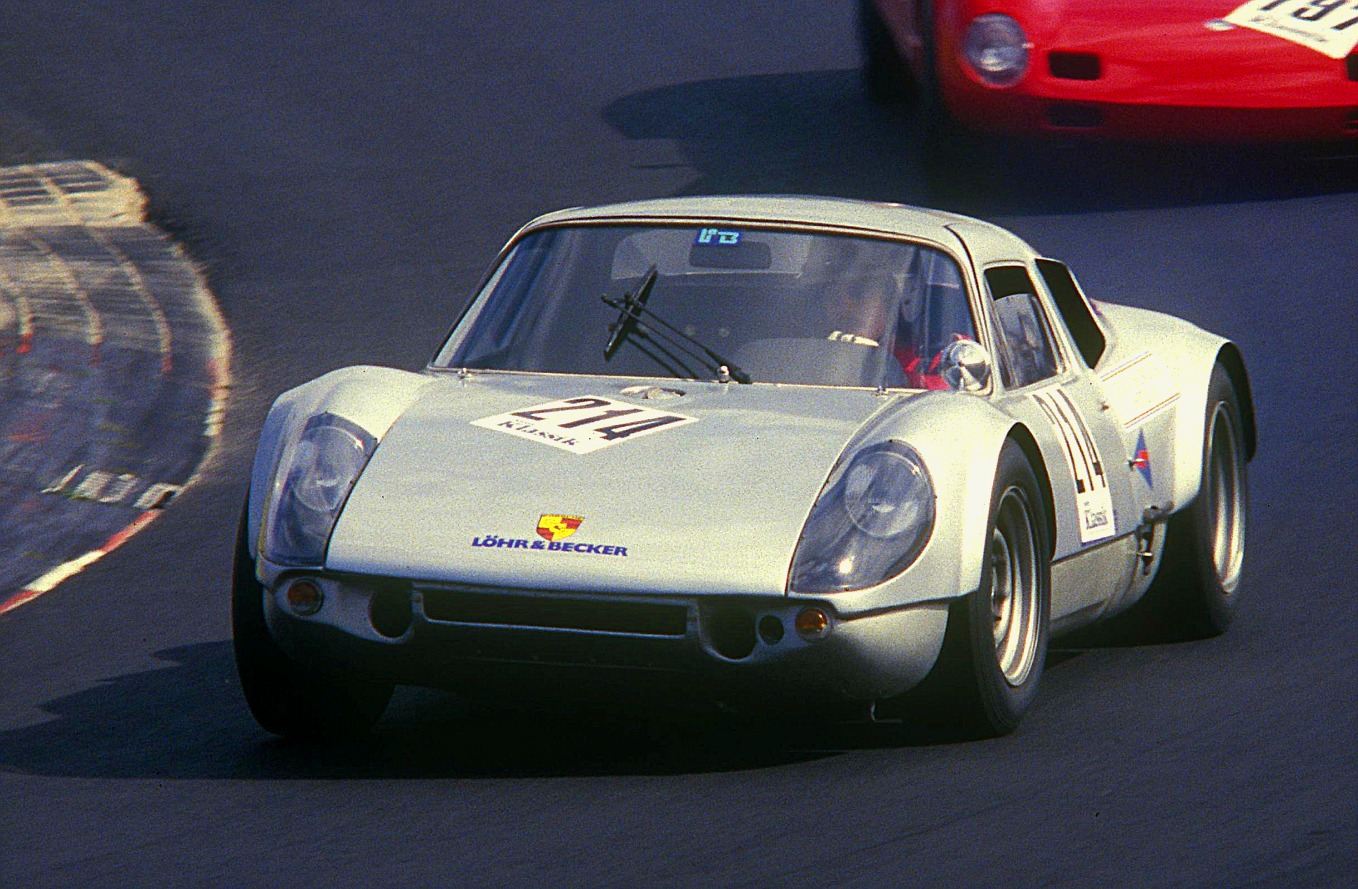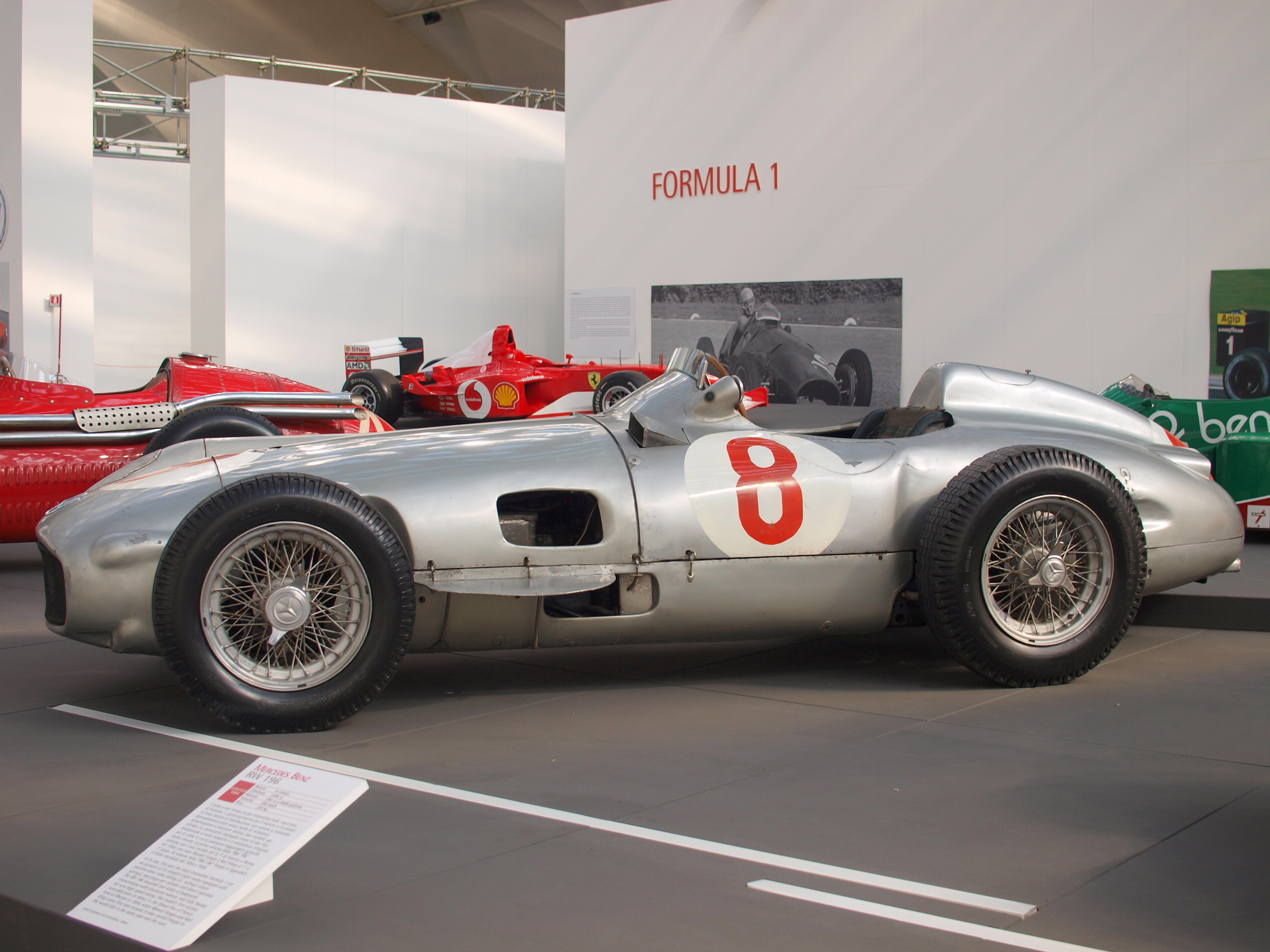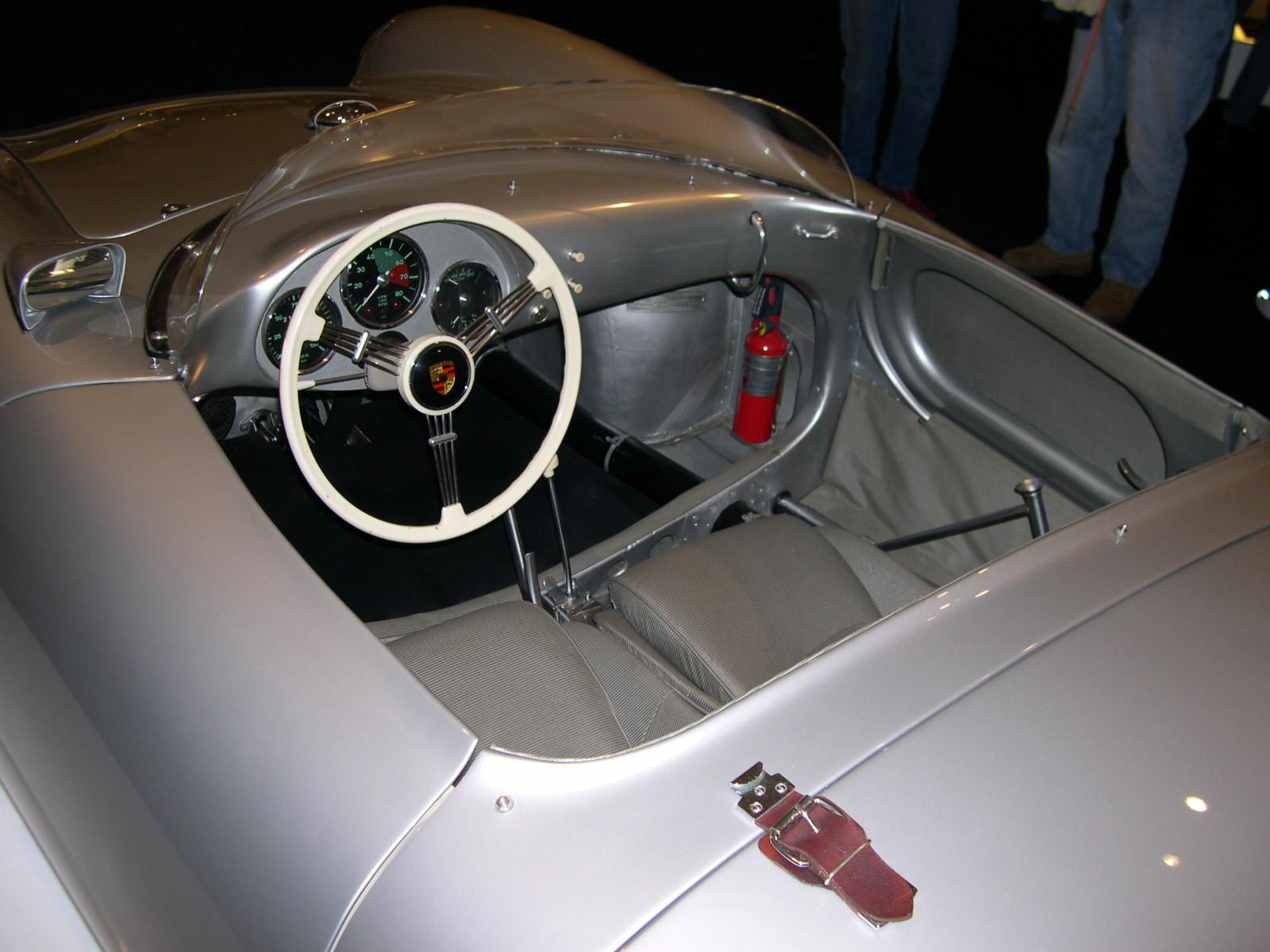|
Porsche 904
The Porsche 904 is an automobile which was produced by Porsche in Germany in 1964 and 1965. It was officially called Porsche Carrera GTS due to the same naming rights problem that required renaming the Porsche 901 to Porsche 911. History After having withdrawn from Formula One at the end of the 1962 season, Porsche focused again on sportscar racing. The 904 debuted late in 1963, for the 1964 racing season, as a successor to the 718, which had been introduced in 1957. Porsche designed the GTS variant to compete in the FIA- GT class at various international racing events. The street-legal version debuted in 1964 in order to comply with group 3 appendix JGabbard, p.82. homologation regulations requiring a certain number of road-going variants be sold by the factory. Porsche produced one-hundred and six 904s at four or five a dayGabbard, p.84. with a list price of US$7245 (FOB Stuttgart). Orders far exceeded the one hundred car requirement to satisfy homologation rules and more cars ... [...More Info...] [...Related Items...] OR: [Wikipedia] [Google] [Baidu] |
Flat-eight Engine
A flat-eight engine, also called a horizontally-opposed eight, is an eight-cylinder piston engine with two banks of four inline cylinders, one on each side of a central crankshaft, 180° apart. In a flat-eight engine, the connecting rods for corresponding pistons from the left and right banks may share a crankshaft journal. A boxer-eight engine is a special case of a flat-eight where each piston's connecting rod has its own journal, and each pair of opposed pistons moves inwards or outwards at the same time. Flat-eight engines have been used in automotive, aircraft, and marine applications. Design The advantages of a flat-eight engine are its minimal length and low centre of mass. A disadvantage is its greater width compared to a V8 or inline-eight engine. A flat-eight engine is able to have perfect primary balance and secondary balance. A boxer-eight engine has a single piston per crankpin, which increases the linear offset between the cylinder banks. A boxer-eight with nine ... [...More Info...] [...Related Items...] OR: [Wikipedia] [Google] [Baidu] |
Porsche
Dr. Ing. h.c. F. Porsche AG, usually shortened to Porsche (; see #Pronunciation, below), is a German automobile manufacturer specializing in high-performance sports cars, SUVs and sedans, headquartered in Stuttgart, Baden-Württemberg, Germany. The company is owned by Volkswagen Group, Volkswagen AG, a controlling stake of which is owned by Porsche Automobil Holding SE. Porsche's current lineup includes the Porsche Boxster/Cayman, 718 Boxster/Cayman, Porsche 992, 911 (992), Porsche Panamera, Panamera, Porsche Macan, Macan, Porsche Cayenne, Cayenne and Porsche Taycan, Taycan. History Origin Ferdinand Porsche (1875–1951) founded the company called "Dr. Ing. h. c. F. Porsche Gesellschaft mit beschränkter Haftung, GmbH" with Adolf Rosenberger and Anton Piëch in 1931. The main offices was at Kronenstraße 24 in the centre of Stuttgart. Initially, the company offered motor vehicle development work and consulting, but did not build any cars under its own name. One of the first as ... [...More Info...] [...Related Items...] OR: [Wikipedia] [Google] [Baidu] |
Group 3 (racing)
The Group 3 racing class referred to a set of regulations for Grand Touring Cars competing in sportscar racing and rallying events regulated by the FIA. These regulations were active, in various forms, from 1957 to 1981 1957 to 1965 Regulations for Grand Touring Car racing were first defined when the FIA issued "Appendix J" for Touring Cars and GT Cars in 1954. The term Group 3 was in use by 1957 and by 1960 a minimum production of 100 units János J Wimpffen, Time and Two Seats, 1999, page 297 in 12 consecutive months was required to allow homologation into Group 3. An FIA GT Cup János J Wimpffen, Time and Two Seats, 1999, page 331 was instituted in 1960 and the GT category was featuring prominently in most rounds of the World Sports Car Championship The World Sportscar Championship was the world series run for sports car racing by the FIA from 1953 to 1992. The championship evolved from a small collection of the most important sportscar, endurance, and road racing ... [...More Info...] [...Related Items...] OR: [Wikipedia] [Google] [Baidu] |
Silver Arrows
Silver Arrows (german: link=no, Silberpfeil) was the nickname given by the press to Germany's dominant Mercedes-Benz and Auto Union Grand Prix motor racing cars between 1934 and 1939. The name was later applied to the Mercedes-Benz Formula One and sports cars in 1954 and 1955, then to the Group C prototype racing sports cars that were successful at the Le Mans in the late 1980's, and currently applied to the Mercedes AMG Petronas Formula One Team cars from 2010 to present. For decades until the introduction of sponsorship liveries, each country had its traditional colour in automobile racing. German race cars for their ''Silver Arrows'' silver, Italian for their ''Rosso Corsa'' red, British ones are ''British racing green'' green, French '' Bleu de France'' blue, etc. German cars like the Blitzen Benz were white, as were the three Mercedes that won the 1914 French Grand Prix 1–2–3. On the other hand, Mercedes won the Italian Targa Florio with cars painted red in 19 ... [...More Info...] [...Related Items...] OR: [Wikipedia] [Google] [Baidu] |
Drag Coefficient
In fluid dynamics, the drag coefficient (commonly denoted as: c_\mathrm, c_x or c_) is a dimensionless quantity that is used to quantify the drag or resistance of an object in a fluid environment, such as air or water. It is used in the drag equation in which a lower drag coefficient indicates the object will have less aerodynamic or hydrodynamic drag. The drag coefficient is always associated with a particular surface area. The drag coefficient of any object comprises the effects of the two basic contributors to fluid dynamic drag: skin friction and form drag. The drag coefficient of a lifting airfoil or hydrofoil also includes the effects of lift-induced drag. The drag coefficient of a complete structure such as an aircraft also includes the effects of interference drag. Definition The drag coefficient c_\mathrm d is defined as c_\mathrm d = \dfrac where: * F_\mathrm d is the drag force, which is by definition the force component in the direction of the flow velocity; * ... [...More Info...] [...Related Items...] OR: [Wikipedia] [Google] [Baidu] |
Chassis
A chassis (, ; plural ''chassis'' from French châssis ) is the load-bearing framework of an artificial object, which structurally supports the object in its construction and function. An example of a chassis is a vehicle frame, the underpart of a motor vehicle, on which the body is mounted; if the running gear such as wheels and transmission, and sometimes even the driver's seat, are included, then the assembly is described as a rolling chassis. Examples of use Vehicles In the case of vehicles, the term ''rolling chassis'' means the frame plus the "running gear" like engine, transmission, drive shaft, differential and suspension. An underbody (sometimes referred to as "coachwork"), which is usually not necessary for integrity of the structure, is built on the chassis to complete the vehicle. For commercial vehicles, a rolling chassis consists of an assembly of all the essential parts of a truck without the body to be ready for operation on the road. A car chassis wi ... [...More Info...] [...Related Items...] OR: [Wikipedia] [Google] [Baidu] |
Adhesive
Adhesive, also known as glue, cement, mucilage, or paste, is any non-metallic substance applied to one or both surfaces of two separate items that binds them together and resists their separation. The use of adhesives offers certain advantages over other binding techniques such as sewing, mechanical fastenings, or welding. These include the ability to bind different materials together, the more efficient distribution of stress across a joint, the cost-effectiveness of an easily mechanized process, and greater flexibility in design. Disadvantages of adhesive use include decreased stability at high temperatures, relative weakness in bonding large objects with a small bonding surface area, and greater difficulty in separating objects during testing. Adhesives are typically organized by the method of adhesion followed by ''reactive'' or ''non-reactive'', a term which refers to whether the adhesive chemically reacts in order to harden. Alternatively, they can be organized eithe ... [...More Info...] [...Related Items...] OR: [Wikipedia] [Google] [Baidu] |
Fibreglass
Fiberglass (American English) or fibreglass (Commonwealth English) is a common type of fiber-reinforced plastic using glass fiber. The fibers may be randomly arranged, flattened into a sheet called a chopped strand mat, or woven into glass cloth. The plastic matrix may be a thermoset polymer matrix—most often based on thermosetting polymers such as epoxy, polyester resin, or vinyl ester resin—or a thermoplastic. Cheaper and more flexible than carbon fiber, it is stronger than many metals by weight, non-magnetic, non-conductive, transparent to electromagnetic radiation, can be molded into complex shapes, and is chemically inert under many circumstances. Applications include aircraft, boats, automobiles, bath tubs and enclosures, swimming pools, hot tubs, septic tanks, water tanks, roofing, pipes, cladding, orthopedic casts, surfboards, and external door skins. Other common names for fiberglass are glass-reinforced plastic (GRP), glass-fiber reinforced plastic (GFRP) or ... [...More Info...] [...Related Items...] OR: [Wikipedia] [Google] [Baidu] |
Porsche 356
The Porsche 356 is a sports car that was first produced by Austrian company Porsche Konstruktionen GesmbH (1948–1949), and then by German company Dr. Ing. h. c. F. Porsche GmbH (1950–1965). It was Porsche's first production automobile. Earlier cars designed by the Austrian company include Cisitalia Grand Prix race car, the Volkswagen Beetle, and Auto Union Grand Prix cars. The 356 is a lightweight and nimble-handling, rear-engine, rear-wheel drive, two-door available both in hardtop coupé and open configurations. Engineering innovations continued during the years of manufacture, contributing to its motorsports success and popularity. Production started in 1948 at Gmünd, Austria, where Porsche built approximately 50 cars. In 1950 the factory relocated to Zuffenhausen, Germany, and general production of the 356 continued until April 1965, well after the replacement model 911 made its September 1964 debut. Of the 76,000 originally produced, approximately half survive. ... [...More Info...] [...Related Items...] OR: [Wikipedia] [Google] [Baidu] |
Porsche 550
The Porsche 550 is a racing sports car produced by Porsche from 1953 until 1956. In that time only 90 Porsche 550s were produced, and they quickly established dominance in the 1.1- and 1.5- liter classes. The Porsche 550 is a mid-engine car with an air-cooled four-cylinder engine, following the precedent of the 1948 Porsche 356/1 prototype designed by Ferry Porsche. The mid-engine racing design was further developed with Porsche's 718 model; its advantages led to it becoming the dominant design for top-level racing cars by the mid-1960s. The Porsche 550 has a solid racing history; the first race it entered, the Nurburgring Eifel Race in May 1953, it won. The 550 spyder usually finished in the top three in its class. Each spyder was designed and customized to be raced. A 1958 Porsche 550A spyder sold at auction in 2018 by Bonhams for $5,170,000 (£4,115,763) - the highest price for a 550 at auction. Engine and transmission The Type 550/550 A is powered by an all aluminium ... [...More Info...] [...Related Items...] OR: [Wikipedia] [Google] [Baidu] |
Carburetor
A carburetor (also spelled carburettor) is a device used by an internal combustion engine to control and mix air and fuel entering the engine. The primary method of adding fuel to the intake air is through the venturi tube in the main metering circuit, however various other components are also used to provide extra fuel or air in specific circumstances. Since the 1990s, carburetors have been largely replaced by fuel injection for cars and trucks, however carburetors are still used by some small engines (e.g. lawnmowers, generators and concrete mixers) and motorcycles. Diesel engines have always used fuel injection instead of carburetors. Etymology The name "carburetor" is derived from the verb ''carburet'', which means "to combine with carbon," or in particular, "to enrich a gas by combining it with carbon or hydrocarbons." Thus a carburetor mixes intake air with hydrocarbon-based fuel, such as petrol or autogas (LPG). The name is spelled "carburetor" in American English ... [...More Info...] [...Related Items...] OR: [Wikipedia] [Google] [Baidu] |
Weber Carburetor
Weber Carburetors is an automotive manufacturing company founded in 1923, known for their carburetors. History Eduardo Weber began his automotive career working for Fiat, first at their Turin plant (in 1914) and later at a dealership in Bologna. After WWI, with gasoline prices high, he reached a certain success in selling conversion kits for running trucks on kerosene instead. The company was established as ''Fabbrica Italiana Carburatori Weber'' in 1923 when Weber produced carburetors as part of a conversion kit for Fiats. Weber pioneered the use of two-stage twin-barrel carburetors, with two venturis of different sizes (the smaller one for low-speed running and the larger one optimised for high-speed use). In the 1930s, Weber began producing twin-barrel carburetors for motor racing, where two barrels of the same size were used. These were arranged so that each cylinder of the engine had its own carburetor barrel. These carburetors found use in Maserati and Alfa Romeo racin ... [...More Info...] [...Related Items...] OR: [Wikipedia] [Google] [Baidu] |


.jpg)





